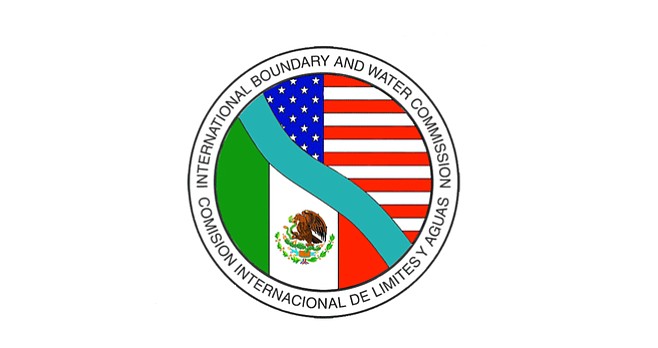 Facebook
Facebook
 X
X
 Instagram
Instagram
 TikTok
TikTok
 Youtube
Youtube

The border sewage plant that treats Mexican sewage, which the International Boundary and Water Commission oversees, has had two violations of treatment standards since February — far fewer than preceding years.
One of the violations came on April 20, and it's pretty clear that "somebody opened a manhole," according to Steve Smullen, San Diego area operations manager for the IBWC plant.
"A notable amount of petroleum products, fats, oil, and grease" showed up at the plant's intake, which is set up to treat Mexican sewage using biological processes that most sewage plants use.
"It didn't affect our bacteria at all, and that matters because if you kill it off, you're going to be violating [treatment standards] for weeks and weeks until you grow new bacteria," Smullen said. "It started around 3 p.m. and went on until 10 or 11 p.m. — it wasn't just a truckload, something like that is clearly a dump."
The sewage plant notified Mexican officials, but neither city nor state government representatives were aware of the dumping. Noted environmentalist and founder of the Southwest Wetlands Interpretive Association Michael McCoy called the grease dump "criminal activity."
The other treatment violation during the three-month period was for solids in the treated water, which is piped out to the ocean outfall, three miles offshore. The solids float to the surface and slip over the containment structure, Smullen said.
The plant is looking at ways to deal with solids, which tend to float and resist treatment in the tanks where sewage ferments. For now, they're mixing in polymers that bind the stuff and make it sink.
A May 23 citizens' advisory forum included updates on plant operations. The plant is under a court decree from 2007 that put the plant on notice it would have to meet higher standards consistently.
Spills and broken pipes at other sewage-treatment plants in Mexico and the diversion of sewage from Tijuana's other plants into the Tijuana River often aren't reported until well after they occur — and often because someone in Imperial Beach notices and complains.
"The IBWC is better at receiving citizen feedback and at reporting now than it has been," said Serge Dedina, executive director of WildCoast.
WildCoast's Paloma Aguirre has been working closely with Mexican agencies to push for better practices, better reporting, and less sewage in the Tijuana River.
When it's working well, the IBWC plant's treated effluent is cleaner than San Diego's, even though Mexican sewage is much more concentrated than U.S. sewage. But the plant is part of a tangle of sewage plants and water issues that trouble the Tijuana River watershed, both in the U.S. and Mexico.
"IBWC has significantly improved its capacity, and they have gotten much better at keeping us informed," Dedina said.


The border sewage plant that treats Mexican sewage, which the International Boundary and Water Commission oversees, has had two violations of treatment standards since February — far fewer than preceding years.
One of the violations came on April 20, and it's pretty clear that "somebody opened a manhole," according to Steve Smullen, San Diego area operations manager for the IBWC plant.
"A notable amount of petroleum products, fats, oil, and grease" showed up at the plant's intake, which is set up to treat Mexican sewage using biological processes that most sewage plants use.
"It didn't affect our bacteria at all, and that matters because if you kill it off, you're going to be violating [treatment standards] for weeks and weeks until you grow new bacteria," Smullen said. "It started around 3 p.m. and went on until 10 or 11 p.m. — it wasn't just a truckload, something like that is clearly a dump."
The sewage plant notified Mexican officials, but neither city nor state government representatives were aware of the dumping. Noted environmentalist and founder of the Southwest Wetlands Interpretive Association Michael McCoy called the grease dump "criminal activity."
The other treatment violation during the three-month period was for solids in the treated water, which is piped out to the ocean outfall, three miles offshore. The solids float to the surface and slip over the containment structure, Smullen said.
The plant is looking at ways to deal with solids, which tend to float and resist treatment in the tanks where sewage ferments. For now, they're mixing in polymers that bind the stuff and make it sink.
A May 23 citizens' advisory forum included updates on plant operations. The plant is under a court decree from 2007 that put the plant on notice it would have to meet higher standards consistently.
Spills and broken pipes at other sewage-treatment plants in Mexico and the diversion of sewage from Tijuana's other plants into the Tijuana River often aren't reported until well after they occur — and often because someone in Imperial Beach notices and complains.
"The IBWC is better at receiving citizen feedback and at reporting now than it has been," said Serge Dedina, executive director of WildCoast.
WildCoast's Paloma Aguirre has been working closely with Mexican agencies to push for better practices, better reporting, and less sewage in the Tijuana River.
When it's working well, the IBWC plant's treated effluent is cleaner than San Diego's, even though Mexican sewage is much more concentrated than U.S. sewage. But the plant is part of a tangle of sewage plants and water issues that trouble the Tijuana River watershed, both in the U.S. and Mexico.
"IBWC has significantly improved its capacity, and they have gotten much better at keeping us informed," Dedina said.
Comments